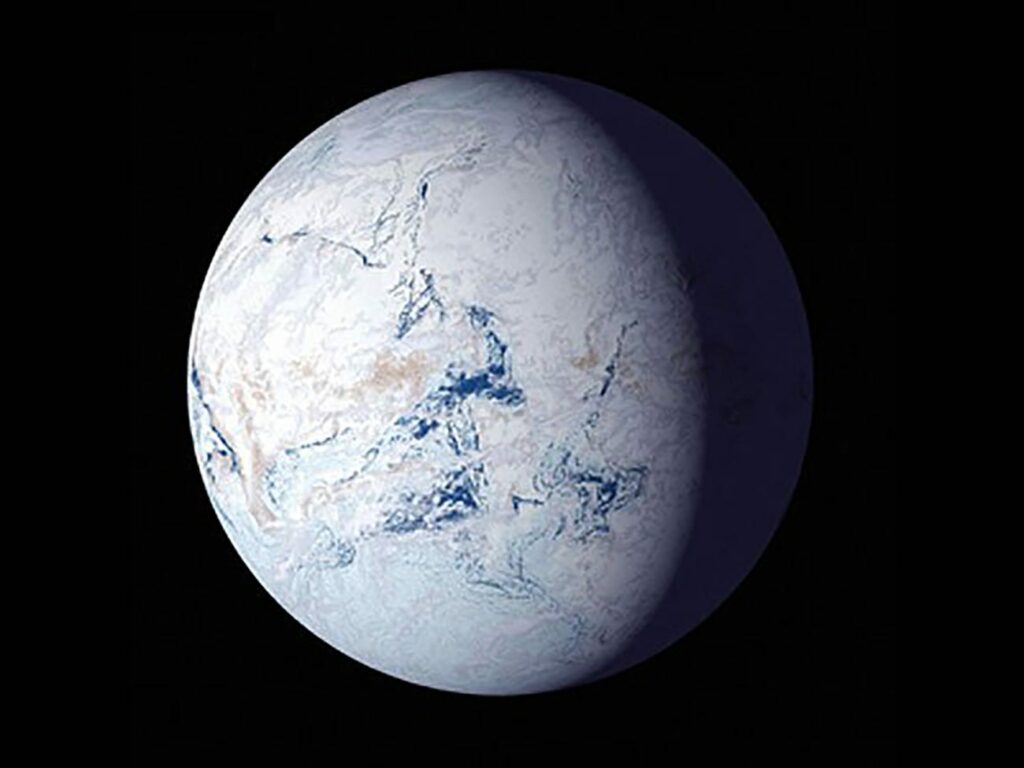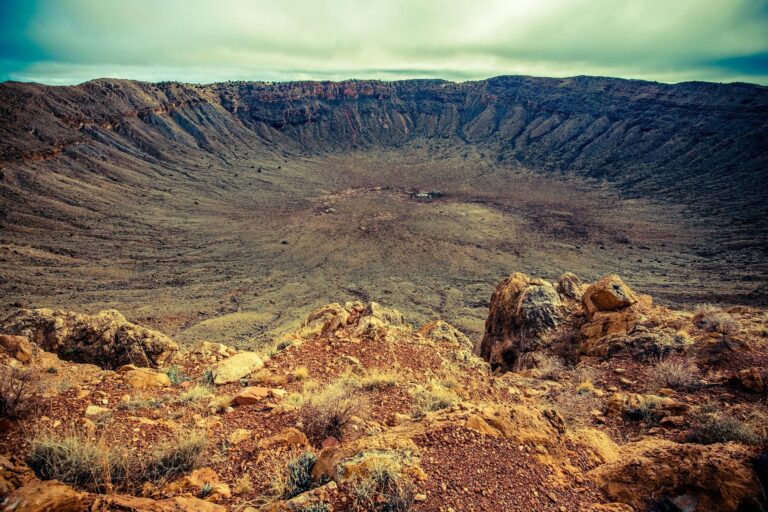Scientists have identified approximately 70,000 meteorites, fragments of space objects that collide with Earth. However, only 190 of these meteorites have left visible impact craters that scientists can recognize.
According to a recent research article published in the journal Nature Communications, the oldest known impact site is located in Western Australia, about 500 miles northeast of Perth. This site, known as Yarrabubba, was created around 2.2 billion years ago when a massive meteorite struck, forming a crater that spanned 43 miles in diameter.
Due to erosion and the movement of tectonic plates, the distinct crater at Yarrabubba is no longer visible. The site now appears as a dusty red landscape, with minimal exposed rock and a reddish stain covering most of it.
However, evidence of the cataclysmic event can still be found in the form of rocks. At the center of the site, there is a small elevation called Barlangi Rock, which is composed entirely of rocks that formed under the extreme conditions caused by the meteorite’s impact.

Erickson and his team accurately determined the age of the Yarrabubba crater by dating the rocks found in the area. Their research revealed that this crater is over 200 million years older than any other known impact site on Earth.
Located in the remote outback of Western Australia, approximately 40 miles away from Meekatharra, the Yarrabubba site can be reached via a gravel track. In 2014, Erickson collected 200 pounds of rocks from the site for further analysis.
To determine the age of the rocks, Erickson’s team submerged the samples in water at their laboratory and exposed them to 120,000 volts of electrical energy. This process caused the rocks to break down into microscopic grains of zircon and monazite, which contain radioactive elements like uranium that help in age determination.
The analysis showed that the rocks from Yarrabubba are 2.229 billion years old, with a margin of error of plus or minus 5 million years.
The second oldest known impact site on Earth is the Vredefort Dome in South Africa, dating back 2.02 billion years, followed by Ontario’s Sudbury impact structure, which formed 1.85 billion years ago.
Erickson highlighted that besides the age of the Yarrabubba crater, the timing of the impact is also significant as it coincided with a crucial period in Earth’s history, marking a transition towards conditions more similar to the present.

The Yarrabubba meteorite is believed to have collided with Earth during a time when the planet was covered in a massive ice sheet. This collision, which occurred approximately 2.2 billion years ago, coincided with the end of a global glaciation period known as “snowball Earth.”
Through simulations, Erickson and his team have shown that this impact could have released an astonishing 100 billion tons of water vapor into the upper atmosphere. This sudden influx of water vapor likely contributed to an intensification of the greenhouse effect in Earth’s atmosphere, ultimately leading to a warming trend that brought an end to the ice age.
Erickson further explained that water vapor is an incredibly potent greenhouse gas, even more so than carbon dioxide.

The Yarrabubba meteorite is just one example of how celestial bodies have influenced Earth’s climate. An asteroid that struck Chicxulub, Mexico 66 million years ago, measuring 6 miles wide, caused widespread wildfires, a towering tsunami, and released large amounts of sulfur into the atmosphere. This resulted in a haze that blocked sunlight, cooling the planet and contributing to the extinction of the dinosaurs. The impact also led to acid rain and fallout, causing rapid acidification of the oceans and a mass marine extinction event.
The study’s authors highlighted that such “extraterrestrial bombardment” played a crucial role in shaping Earth’s development, especially when impacts occurred in specific regions. Erickson pointed out that impacts in certain locations, like the Chicxulub impact site in the Yucatan peninsula, which had significant salt and gypsum deposits, released massive amounts of sulfur into the atmosphere, causing catastrophic acid rain.
Do not forget to share your opinion with us to provide you with the best posts !




0 Comments